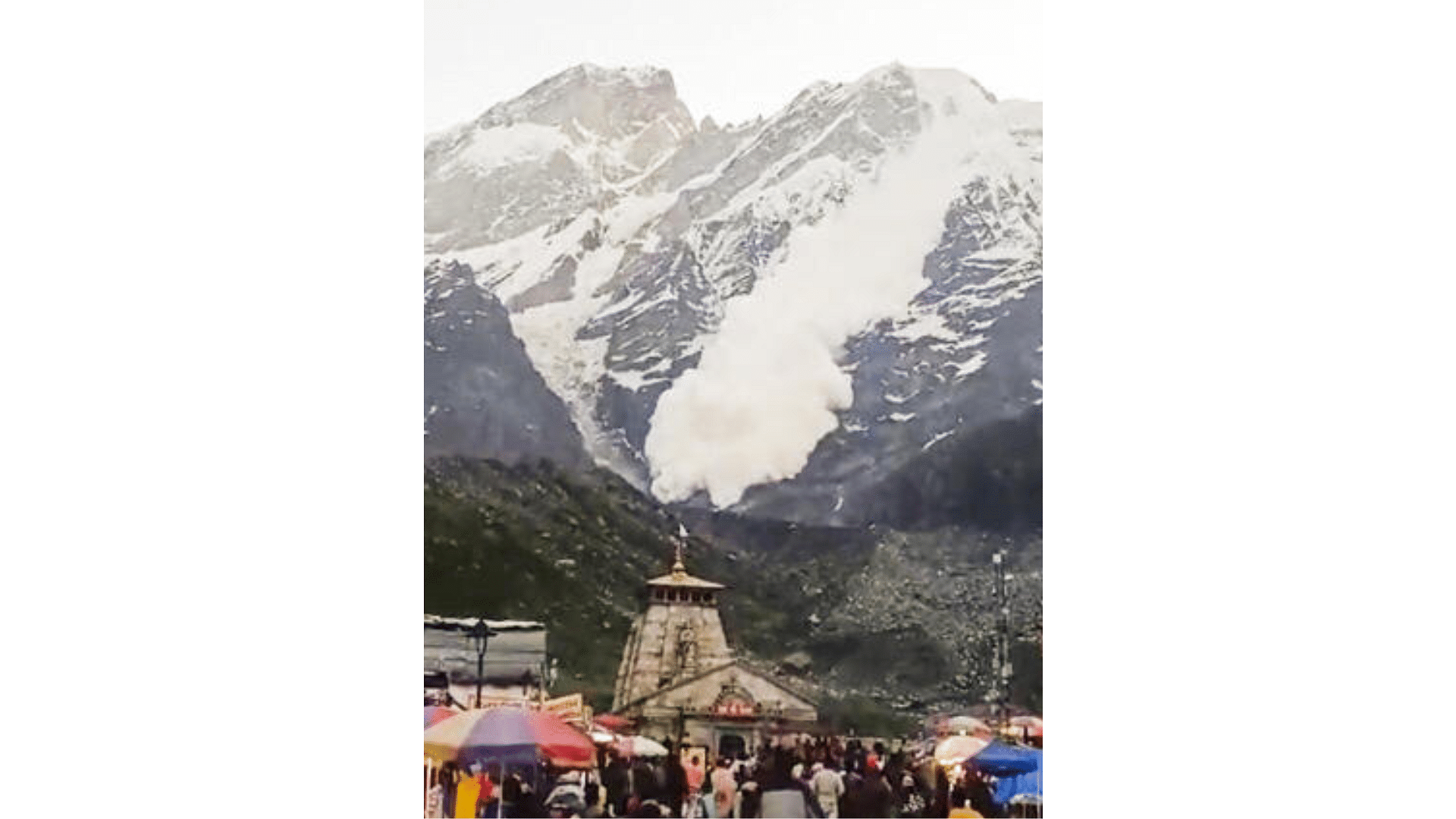
Snow comes down a cliff during an avalanche after a glacier broke down as devotees offer prayers at Kedarnath dham, in Rudraprayag district.
Credit: PTI Photo
Rudraprayag: A massive avalanche hit the Gandhi Sarovar located four kilometres above the Kedarnath Dham here early Sunday morning.
This avalanche that occurred near the Chorabari glacier fell into the valley in the same area but there was no loss of life or property.
Devotees who went to visit the Kedarnath temple this morning captured the natural phenomenon, which occurred around 5 am, on their mobile phones.
A huge cloud of snow was seen sliding down with speed and stopped after falling into a deep ravine. The avalanche occurred in the upper region of the Gandhi Sarovar in Chorabari glacier, below the snow-covered Meru-Sumeru mountain range located at the upper end of Kedarnath valley.
Rudraprayag District Disaster Management Officer Nandan Singh Rajwar said there was no loss of life or property due to the avalanche. The entire area, including the Kedarnath valley, is safe, Rajwar said.
Gopal Singh Rauthan, an employee of Garhwal Mandal Development Corporation, was present in the temple when the avalanche occurred.
There was a lot of curiosity among the devotees who saw this natural phenomenon for about five minutes. Another avalanche occurred in the Chorabari glacier on June 8, Rauthan said.
In 2022, three avalanches hit the area in the months of September and October. Five such incidents of avalanches were reported in the Chorabari glacier in May and June 2023. Following this, scientists from the Indian Institute of Remote Sensing and the Wadia Institute took stock of the entire situation by conducting terrestrial and aerial surveys of the area.
The team of scientists had then described these incidents as “normal” in the Himalayan region, but they had emphasised on improving security in the Kedarnath Dham area.